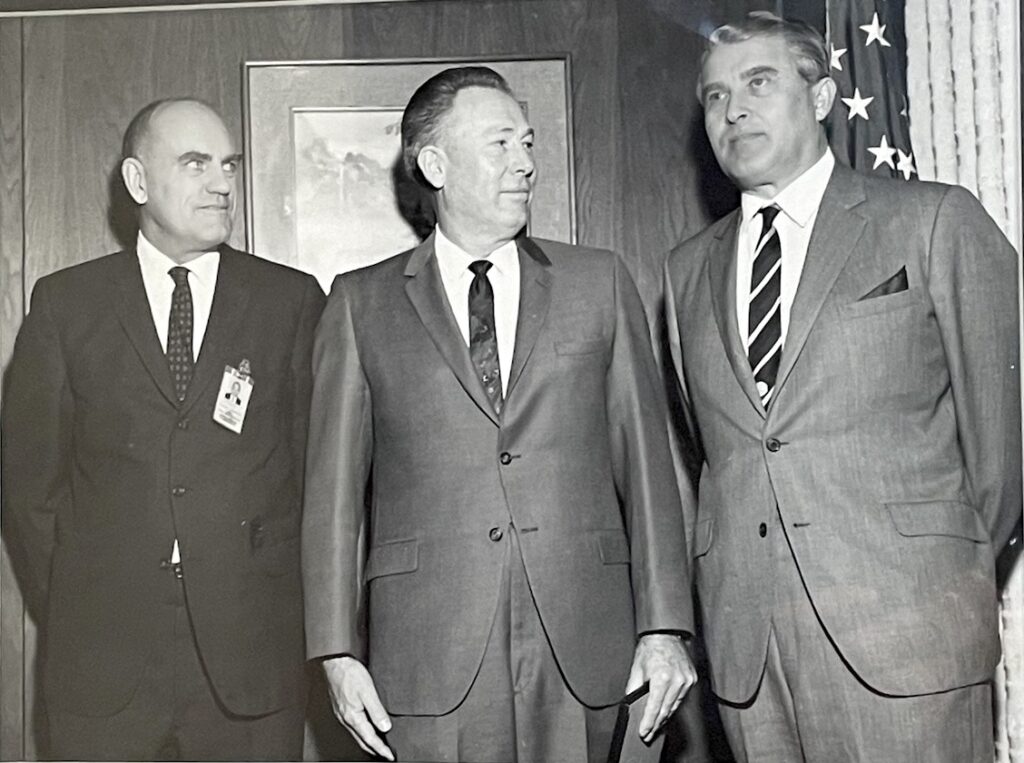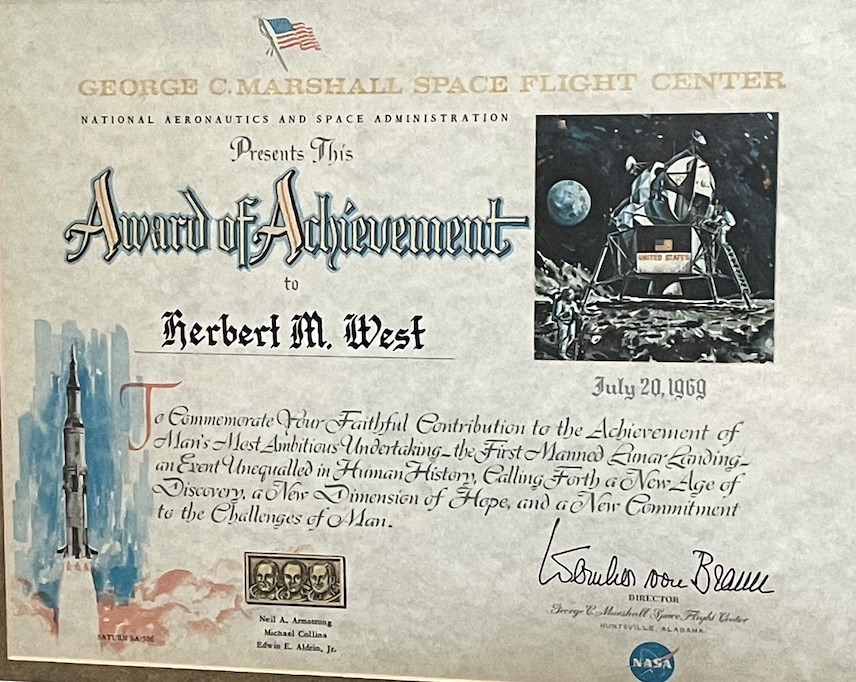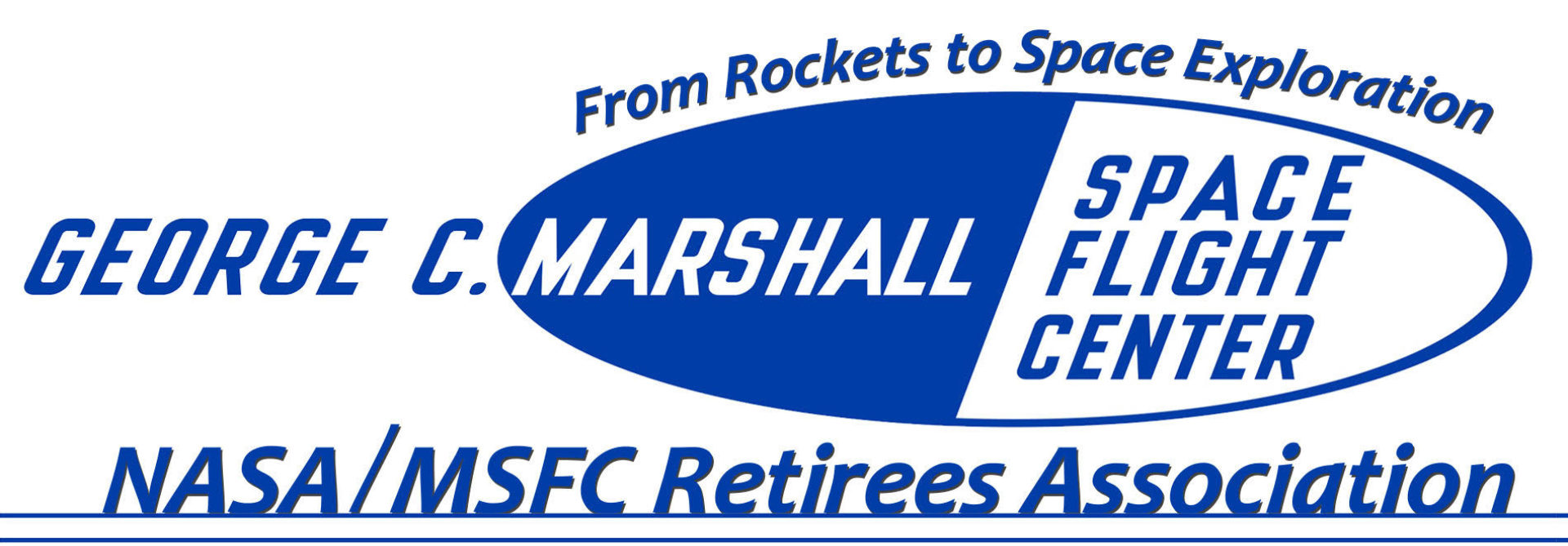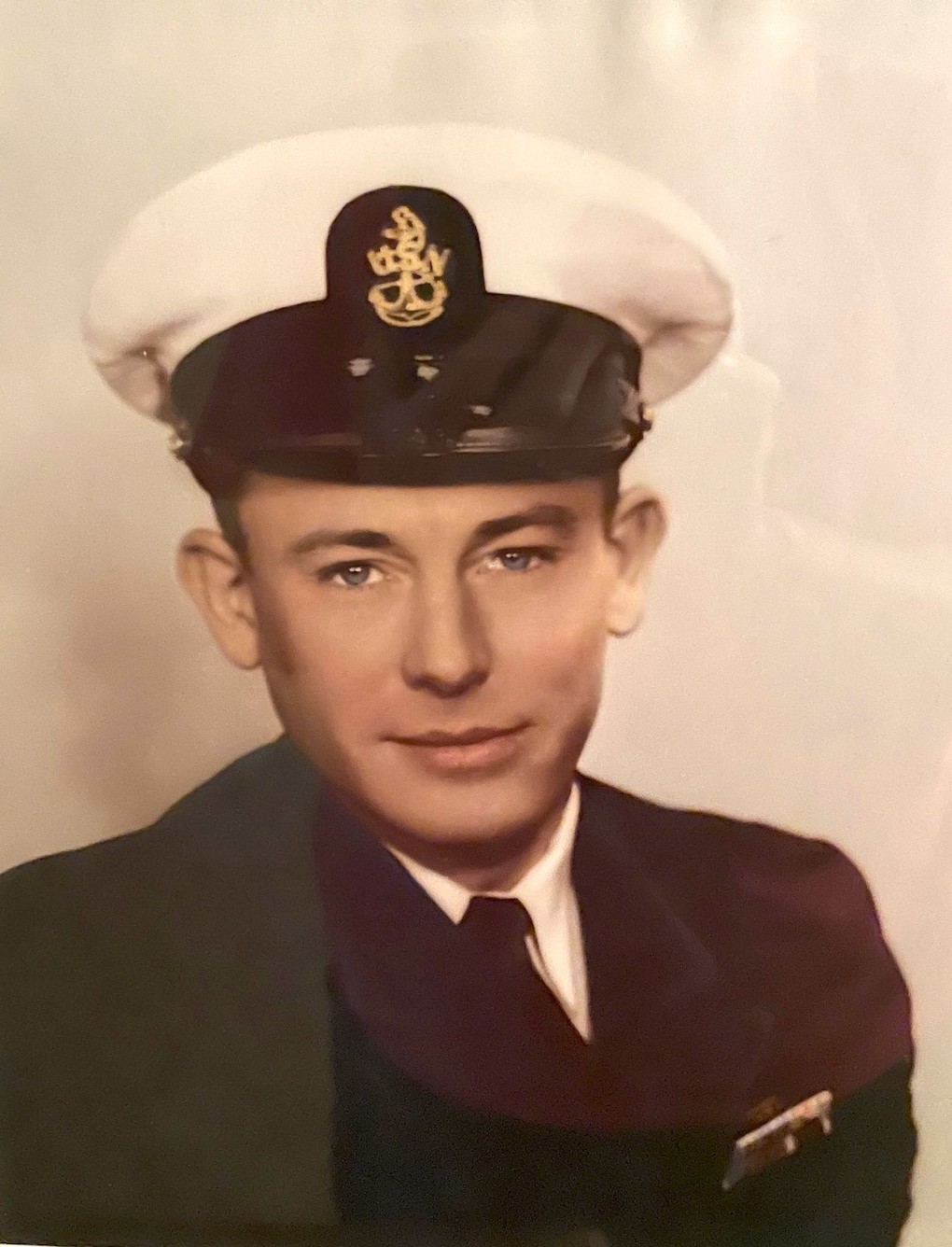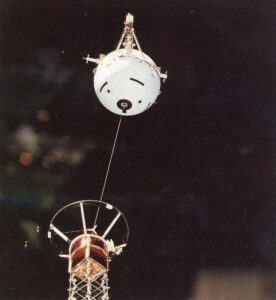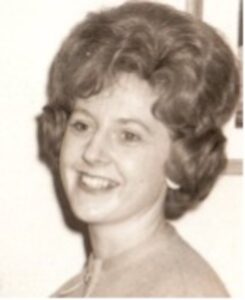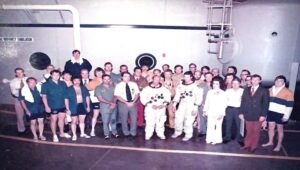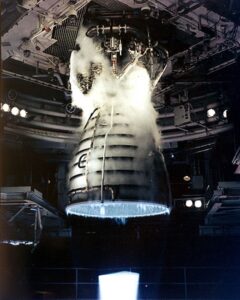Star Salute from Marshall Star, December 4, 1968
Several thousand Americans received their “baptism of fire” in the Japanese air raid on Pearl Harbor 27 years ago on Saturday, Dec. 7.
Among these men was Fire Controlman Third Class Herbert M. West, now working in the Quality and Reliability Assurance Lab. About this time of the year, West and his many Navy veteran friends, including Frank Peigler, recall some of the events of the infamous attack on Sunday, Dec. 7, 1941.
Peigler, also of Quality Lab, was aboard the battleship Oklahoma, one of the more than 18 ships sunk or damaged in the raid.
West recalls he was aboard the USS Raleigh – “an old four stack cruiser built soon after World War I – at the time.” He had joined the Navy in 1938.
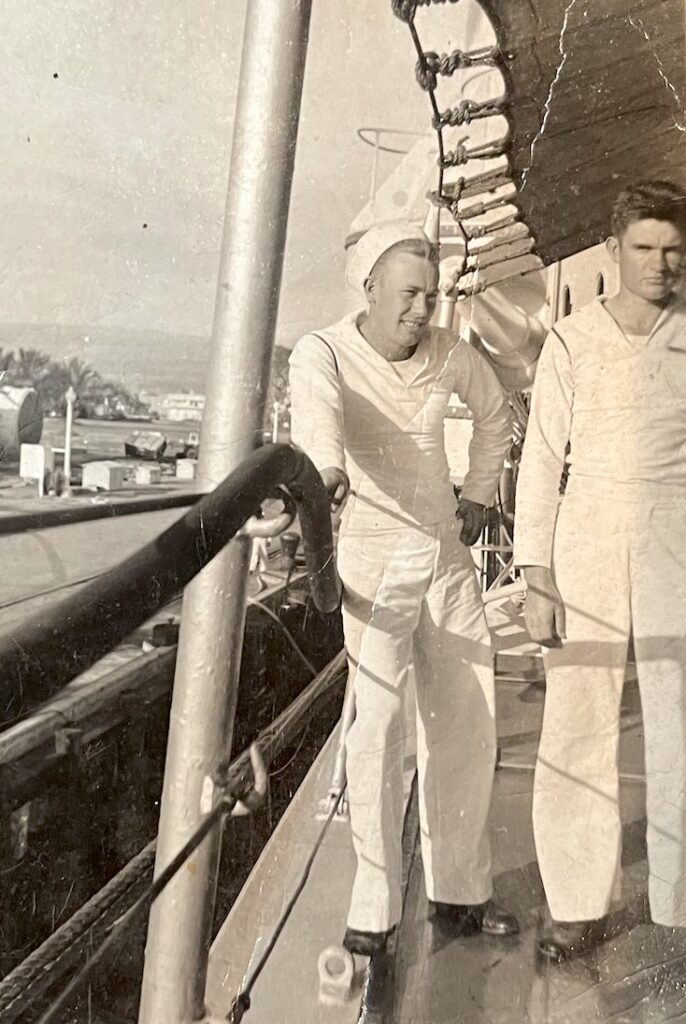
‘I had been to the Pineapple Bowl football game on Saturday night,” West relates and was late getting up, “My first thought when I heard the explosions was that the ammo was blowing up on the ship,” he explains.
“I got to my battle station, a surface range finder,” he said, “but there were no surface craft in the attack.” By then the raid was at a peak, he recounts, “so I found a job on a deflection solver, a device which computes by virtual-mechanical method the lead angle for anti-aircraft gun sights.”
“We shot up a storm for awhile,” he explained. “One of our guns got a direct hit on a Japanese plane and we saw it fall.”
The Raleigh took one torpedo and a bomb “went all the way through the ship,” he said. “We were tied-up to quays close to the beach and did not sink.” Across the bay, on the other side of Ford Island, the battleships Oklahoma and Arizona did not fare so well.
West, recalling bits of the past, said the Raleigh’s skipper saw a plane hit and watched as it fell in the hills. After the attack, “our skipper took a party and found the plane. A large section was brought back to the ship and cut up into souvenirs for the crew. “My piece was left with a relative and I have no idea where it is now,” relates the 20-year Navy veteran.
While hundreds were killed or injured in the raid, West said his shipmates only suffered a couple of injuries. A motor launch alongside to pick up a church party was “turned end over end” by the concussion from the exploding torpedo.
The Raleigh’s damaged hull was temporarily patched up at Pearl, he said, and it went back to Mare Island shipyard at Vallejo, Calif., for repairs. Until West left the ship in December of 1942 to attend fire school in Washington, D. C., the Raleigh was used to escort shipping in the Pacific.
His next assignment was aboard the USS Charrette (DD581). It was aboard the Charrette that West saw the Pacific war. The ship took part in more than 20 raids and attacks on Japanese held islands from October 1943 through 1944.
The ship’s battle log reads like a chronicle of World War II in the Pacific. West and his shipmates were at Wake, Gilbert, Kwajalein, Truk, Battle of Philipine Sea, Bonin Islands, Yap, Guam, the Philippines and Formosa.
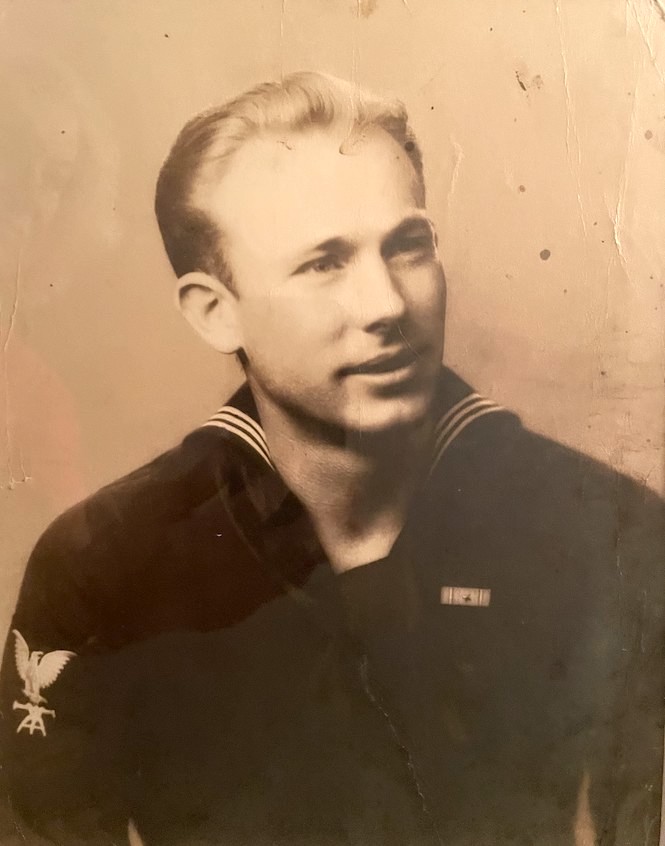
West said the Navy also supported the Australians in Borneo.
Late in the war the Charrette and another destroyer captured a Japanese troop ship disguised as a hospital ship. There were 1664 troops on the ship, called the Taco Bana Maru, he remembers.
West relates that “I never was scared as bad in the later war years as I was at Pearl Harbor. The exposure to war hardens a man.”
West, who retired from active duty in November 1957 after 20 years, spent the immediate post war years on recruiting duty in Nashville and Union City, Tenn. During that three year stay in Middle Tennessee he married a Union City girl.
As a chief fire control technician, West served on a destroyer and mine sweeper in Boston and Charleston, S. C. He later attended fire control technician school in Washington, D. C. for a year before getting instructor duty at Bainbridge, Md., and Great Lakes, Ill. training stations.
He completed his active duty on the USS Cone (DD866) operating out of Norfolk, Va.
The Navy veteran, who is “inclined to be seasick,” now has completed the 30 years required for complete retirement from the Navy.
West said he has seen a lot of changes in fire control technology and is now working on a Saturn S-IVB stage simulator installed in the Quality Lab. The Douglas built electrical-pneumatic simulator will be used to simulate S-IVB propulsion problems.
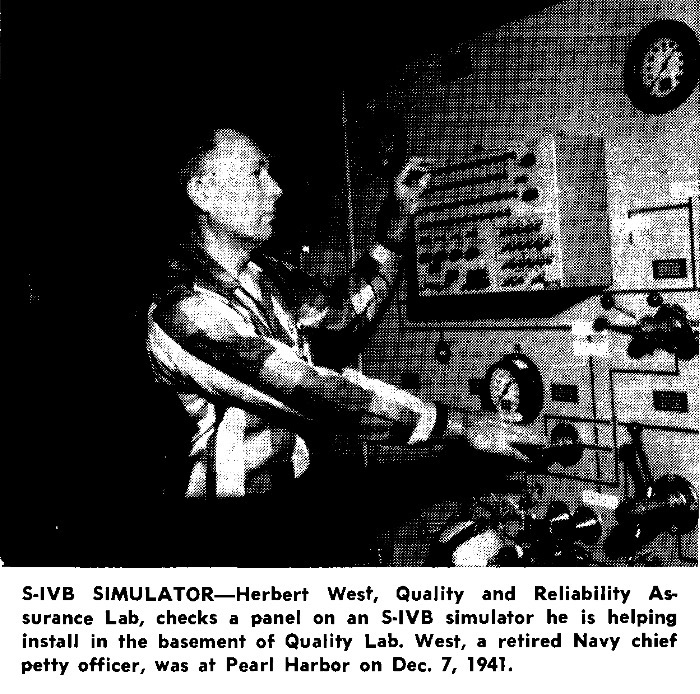
The 53-year old West said he “fully intended to farm a 235 acre farm he owns near Sharon, Tenn., when he retired from active duty.” However, all things considered he feels working as an electronics technician is more to his taste.
As for discussing events of 27 years ago, West says several former Navy men around the Quality Lab and “we can and do swap a few sea yarns now and then.”
